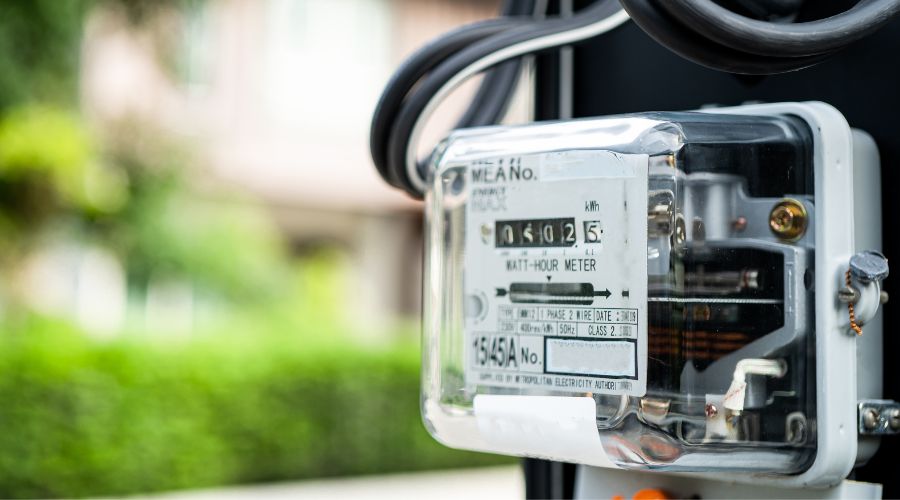Construction companies are adopting a new perspective in favour of eco-friendly structures in response to growing environmental concerns. While maximising energy efficiency and occupant well-being, these cutting-edge structures are built to have as little negative environmental impact as possible. Eco-friendly buildings have a variety of benefits that make them an appealing option for developers, tenants, and the environment as a whole, from lowering energy consumption and enhancing interior air quality to supporting sustainable material utilisation and long-term cost savings. In this blog, we will delve into the numerous advantages of constructing eco-friendly buildings, highlighting the positive impact they have on both the environment and our everyday lives.
1. Reduced Energy Consumption

Buildings that are environmentally friendly use less energy, which is a big advantage. These buildings are made with cutting-edge design elements like adequate insulation, effective heating and cooling systems, and energy-saving appliances. As a result, compared to conventional buildings, they use a lot less energy for lighting, heating, and cooling. This not only lessens their carbon impact but also helps residents save a lot of money on their energy costs.
Eco-friendly buildings place a strong emphasis on energy efficiency, which is accomplished through careful design decisions. A more stable and comfortable interior atmosphere is produced by proper insulation, which reduces heat gain in the summer and loss of heat in the winter. Energy-saving fixtures and appliances further lower energy consumption, while highly efficient heating and cooling systems optimise energy use. The net result is a significant reduction in the carbon footprint and less reliance on fossil fuels, which helps preserve the environment.
2. Improved Indoor Air Quality

Better indoor air quality is a priority for eco-friendly buildings when it comes to the health and well-being of their residents. They accomplish this by using environmentally friendly materials, low-VOC coatings, and cutting-edge ventilation systems. These structures produce a healthier living or working environment by reducing the release of dangerous poisons and pollutants. Reduced health problems, increased productivity, and a higher quality of life for residents are all benefits of improved indoor air quality. Buildings that are environmentally friendly use sustainable materials to prevent the internal environment from becoming contaminated during construction.
Additionally, low-VOC paints and finishes dramatically lessen the discharge of hazardous gases, which can result in allergic reactions and respiratory issues. A safer and healthier interior environment is a result of this careful material selection. For ensuring optimum interior air quality, modern ventilation systems are essential. While effectively removing allergies and contaminants, these systems continuously offer fresh air. Eco-friendly structures avoid the formation of dangerous substances by regulating humidity levels and removing stale air, making the environment for occupants healthier and more comfortable.
3. Water Conservation

Water conservation is a key component of eco-friendly structures, which has various benefits. To reduce water usage during daily activities, these structures have water-saving equipment including low-flow toilets, faucets, and showerheads. To gather and utilise rainwater for non-potable uses like irrigation and toilet flushing, new rainwater harvesting devices are being put in place. This method greatly lessens the demand for water supplies, which is good for the environment and saves residents money on their water bills.
By incorporating water-saving features, eco-friendly buildings contribute to sustainable water management and alleviate the pressure on local water supplies. The reduced reliance on treated municipal water helps preserve water resources for future generations and promotes efficient water usage. Moreover, the financial advantage of lower water bills adds to the appeal of eco-friendly buildings, making them an attractive choice for both environmentally-conscious individuals and those seeking cost savings.
4. Sustainable Material Usage

Eco-friendly structures place a higher priority on the use of sustainable materials, setting them apart from conventional building techniques that frequently rely on non-renewable resources and materials with significant carbon emissions. The use of bamboo and recycled wood in these structures lessens the demand for finite natural resources. Additionally, in order to reduce waste and advance the circular economy, they use recycled materials like steel and concrete. Environmentally friendly structures reduce pollution and enhance interior air quality by utilising goods that are good for the environment, such as low-impact materials.
The emphasis on using sustainable materials in eco-friendly structures provides significant environmental advantages. Using fewer non-renewable resources, it aids in the preservation of natural habitats and ecosystems. These structures lessen the need for resource-intensive production methods by using recycled materials, which also helps reduce waste. Additionally, using eco-friendly items encourages healthier interior environments and lessens the detrimental effects on human health and well-being.
5. Long-Term Cost Savings

Compared to traditional buildings, eco-friendly structures may have greater initial expenditures, but they provide significant long-term cost savings. Throughout a building’s life, energy, and maintenance costs are decreased because of energy-efficient features and environmentally friendly materials. Because of their high energy efficiency, these structures have lower operating costs for their tenants, which more than make up for their initial investment in environmentally responsible construction. Additionally, using strong and resilient materials decreases the frequency of repairs and replacements, reducing the requirement for maintenance expenses.
The financial viability of eco-friendly structures is further enhanced by government incentives and tax credits. Grants, subsidies, and tax breaks are just a few of the financial incentives that many governments offer to encourage the use of sustainable construction methods. These incentives make eco-friendly buildings a more alluring choice for both developers and inhabitants by helping to offset the higher initial expenses. Eco-friendly buildings demonstrate to be a prudent financial investment when taking into account the long-term cost savings and potential incentives.
6. Positive Impact on the Environment

By lowering greenhouse gas emissions, preserving resources, and generating less waste, eco-friendly building techniques have a huge positive impact on the environment. These actions put an emphasis on energy efficiency, which reduces energy use and carbon emissions, aiding in the fight against climate change. Eco-friendly structures also support biodiversity preservation and the preservation of natural resources by utilising effective water management systems and sustainable building materials.
The use of recycled materials is prioritised, waste formation during construction is reduced, and appropriate waste management is encouraged in eco-friendly building practises. These practises all contribute to waste reduction. This promotes the use of resources sustainably and a more circular economy. Furthermore, the construction industry’s transition to eco-friendly practises encourages innovation and the creation of new technology, which can have an outsized influence on areas other than construction.
Conclusion
Environmentally friendly buildings have several benefits in addition to the environment. These buildings demonstrate sustainable living in a variety of ways, including decreased energy use, enhanced interior air quality, long-term cost savings, and a favourable influence on the environment. Eco-friendly buildings are increasingly the norm for responsible development as the need of reducing our carbon footprint is understood by all nations. We can make the future healthier and more sustainable for the earth and ourselves by adopting these practices.

